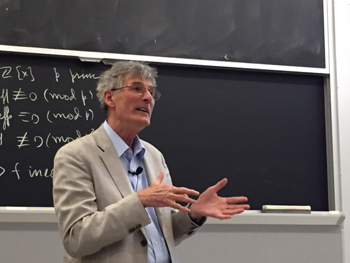
The solution, he said, is to build more efficient cities based on this crystalline frame of reference. Taking this view, the answer to alleviating the heat island problem is to put more space between buildings – the opposite of his earlier experiment, in which less space between particles yielded stronger cement.
“Look at the space between you and your nearest neighbor [in a city]”, Van Damme said. “The excess energy has to transfer somewhere out of each building.” The closer the buildings are together, Van Damme intimated, the more likely that this excess energy will be trapped by and cycled through neighboring buildings instead of moving vertically up and away from the city.
Van Damme maintains, though, that the future for energy efficient cities is bright.
“Cities are efficient. If you double the number of people in the city, you won’t need twice the infrastructure. You will need fifteen percent less than that… People tend to think the bigger the city, the messier and less efficient it is. This is not really true.”
Van Damme is currently on leave from the École de Physique et de Chimie Industrielles de Paris (ESPCI-ParisTech). He served as the director of a CNRS (French National Center for Scientific Research) laboratory in Orléans for fifteen years before becoming a professor at ESPCI-ParisTech. Van Damme is one of the seven CNRS senior researchers of the international joint unit (UMI) between CNRS and MIT: the 2 (MultiScale Material Science for Energy and Environment) laboratory.